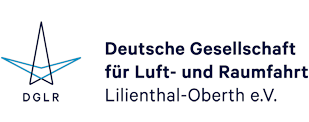DGLR-Publikationsdatenbank - Detailansicht
Autor(en):
M. Malecha, V. Srinivasan, Y. Ghanjaoui, P. Satwan, M. Schönheits, M. Mayer, A. Schuster
Zusammenfassung:
Das Projekt DiCADeMa (Digital Cabin Architectures and Design for Manufacturing) erforscht die digitale Durchgängikeit vom Kabinendesign bis zur Herstellung und Montage von Kabinenkomponenten um den Endkunden (Airlines) eine möglichst späte Entscheidungsmöglichkeit für die Ausgestaltung der Konfiguration der Kabinenelemente zu ermöglichen. In dem betrachteten Use Case werden, ausgehend von einer Sitzkonfiguration, die Positionen der Gepäckablagen berechnet und mit Hilfe der Common Parametric Aircraft Configuration Schema (CPACS) und dem Fuselage Geometry Assembler (FUGA) validiert. Dabei werden die Aufhängepunkte der Gepäckablageelemente an den Spanten bestimmt. Der Prozess wird aus den definierten Einzelschritten geplant (CAMEO) und eine ausführbare Montagefolge aufgebaut. Der Ablauf des Prozesses wird für die teilnehmenden Akteure simuliert und die einzelnen Schritte an die Prozessteilnehmer in der entsprechenden Reihenfolge geschickt: ein Autonomously Guided Vehicle (AGV) mit einem UR10e-Leichtbauroboter fährt die Spante an, bestimmt lokal mit Hilfe der CAD-Daten aus der Simulation und optischer Referenzierung die Aufhängepunkte der Hatracks und markiert die Bohrung die anschließend vom menschlichen Arbeiter manuell gesetzt wird. Das Paper beschreibt die Prozessarchtektur und die für Dezember 2024 geplante Demonstration am Full-Size-Mockup.
Zusammenfassung (EN):
The DiCADeMa (Digital Cabin Architectures and Design for Manufacturing) project researches digital continuity from cabin design to the manufacture and assembly of cabin components in order to enable end customers (airlines) to make decisions about the configuration of the cabin elements as late as possible. In the use case under consideration, starting from a seat configuration, the positions of the luggage racks are calculated and validated using the Common Parametric Aircraft Configuration Schema (CPACS) and the Fuselage Geometry Assembler (FUGA). The suspension points of the luggage rack elements on the frames are determined. The process is planned from the defined individual steps (CAMEO) and an executable assembly sequence is built. The process flow is simulated for the participating actors and the individual steps are sent to the process participants in the appropriate order: an Autonomously Guided Vehicle (AGV) with a UR10e lightweight robot approaches the frame, determined locally with the help of the CAD data from the Simulation and optical referencing determines the suspension points of the Hatracks and marks the hole, which is then manually set by the human worker. The paper describes the process architecture and the demonstration on the full-size mockup planned for December 2024.
Veranstaltung:
Deutscher Luft- und Raumfahrtkongress 2024, Hamburg
Verlag, Ort:
Deutsche Gesellschaft für Luft- und Raumfahrt - Lilienthal-Oberth e.V., Bonn, 2024
Medientyp:
Conference Paper
Sprache:
deutsch
Format:
21,0 x 29,7 cm, 11 Seiten
URN:
urn:nbn:de:101:1-2412131313235.003320428046
DOI:
10.25967/630416
Stichworte zum Inhalt:
Cabin Design, Automated Maufacturing, Digital Process, Last Minute Custamization
Verfügbarkeit:
Kommentar:
Zitierform:
Malecha, M.; Srinivasan, V.; et al. (2024): Vom Kabinenplaner zur Fertigung - das DLR-Projekt DiCADeMa. Deutsche Gesellschaft für Luft- und Raumfahrt - Lilienthal-Oberth e.V.. (Text). https://doi.org/10.25967/630416. urn:nbn:de:101:1-2412131313235.003320428046.
Veröffentlicht am:
13.12.2024
